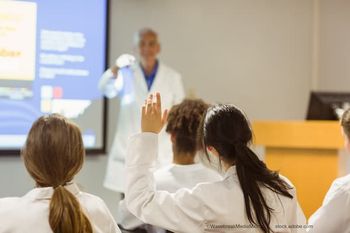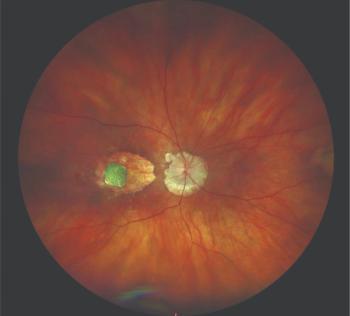
Envision Summit 2025: Incorporating EVO ICL into your practice
At the Envision Summit 2025 in San Juan, Puerto Rico, Arjan Hura, MD, talked about EVO ICL surgery, its benefits, and how every ophthalmologist has the ability and training to conduct the surgery even if they aren't aware.
At the Envision Summit 2025 in San Juan, Puerto Rico, Arjan Hura, MD, talked about EVO ICL surgery, its benefits, and how every ophthalmologist has the ability and training to conduct the surgery even if they aren't aware.
Video Transcript:
Editor's note: The below transcript has been lightly edited for clarity.
Arjan Hura, MD:
Good morning everyone. My name is Arjun Hura. I'm a refractive cataract and anterior segment surgeon at the Maloney-Shamie-Hura Vision Institute in Los Angeles, California. I'm here in sunny Puerto Rico, I just finished giving my talk at my first-ever in Envision 2025 meeting. I was so happy to be here, and it was great to be in a room full of cataract and refractive surgeons. Very interesting to see the mix between academics and private practice, those doing laser vision correction, those doing RLE refractive cataract surgery.
My talk this morning focused on the value proposition of EVO ICL technology. We looked at what are the sort of patients coming in for vision correction, what are their age groups, what are the demographics. And whether you're in private practice or academics, what is the capital cost of potentially acquiring a femtosecond or excimer laser in order to do something like PRK, LASIK or SMILE, relative to the lower, maybe, startup cost of doing EVO ICL surgery?
Every cataract surgeon is trained in ophthalmology residency on how to do cataract surgery. So if you know how to make a paracentesis, a main incision, put an OVD into the eye, take out the OVD, load an IOL and insert an IOL into the eye–for cataract surgery, you have the ability to perform EVO ICL surgery. It's a life-changing surgery that can correct anywhere from -3 to -16 diopters of myopia. It can correct up to 4 diopters of astigmatism. And it's a reversible procedure that can be performed in the same day, bilateral surgery-type manner, to give LASIK-like outcomes with near LASIK-like recovery. Once that dilation wears off, those patients are really seeing great.
So the point of my talk was to show everyone you have the skill set to do refractive surgery if you didn't learn how to do LASIK or PRK or SMILE in residency or fellowship. If you don't have access to lasers to do those surgeries, it doesn't matter, because there's an alternative form of refractive surgery called EVO ICL surgery that can give those same outcomes and give patients visual freedom.
Yeah, well, I would say when it comes to ICL surgery, one of the biggest changes that recently took place was EVO ICL. And so compared to the previous generation of ICL technology, the EVO ICL has a central port and then 2 peripheral ports on each side as well, so a total of 5 ports. And it may sound like a small change from the previous iteration, but this was a very big deal, because 2 of the big things we used to worry about with the old version of ICL technology was one, potential early ASC cataract formation, and two, long-term IOP issues, or glaucoma. Because of that central port, sizing has become much more forgiving. The incidence internationally and even in our FDA clinical trial here in the United States, of early cataract formation, long-term pressure issues was very, very low. And so the EVO ICL surgery has become the safest version of it in its near 3 decade, 3 decade-plus journey. And so it's easier now for people or surgeons who are maybe a little hesitant about adopting it because of some of the risks associated with it in the past, to take it on now and really give patients excellent, uncorrected vision.
Newsletter
Don’t miss out—get Ophthalmology Times updates on the latest clinical advancements and expert interviews, straight to your inbox.





